If you are craving a rich and hearty udon dish, Curry Udon is definitely worth trying. Combining the richness of Japanese curry with the deep umami of udon noodle soup, it offers a comforting and savory experience that is sure to satisfy both noodle and curry lovers alike.
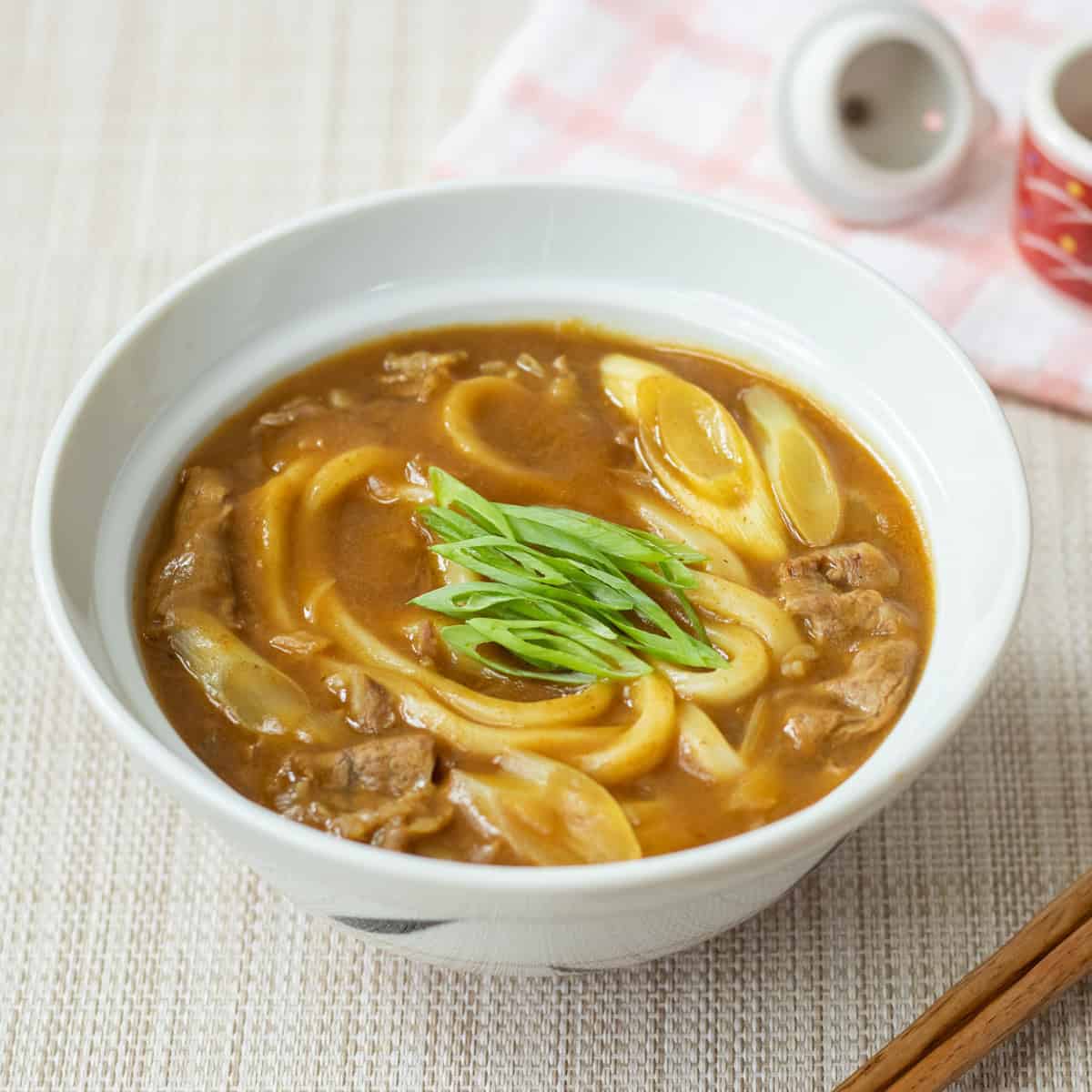
Jump to:
What is Japanese Curry Udon?
Japanese Curry Udon is a dish consisting of boiled udon noodles served in a dashi-based curry soup. The curry soup is made by adding Japanese curry roux or curry powder to dashi broth and thickening it with starch.
Many people assume that the dish is simply boiled udon noodles topped with curry, but that is not quite accurate. Japanese curry udon specifically requires dashi as its soup base. This tradition is tied to the dish’s origin.
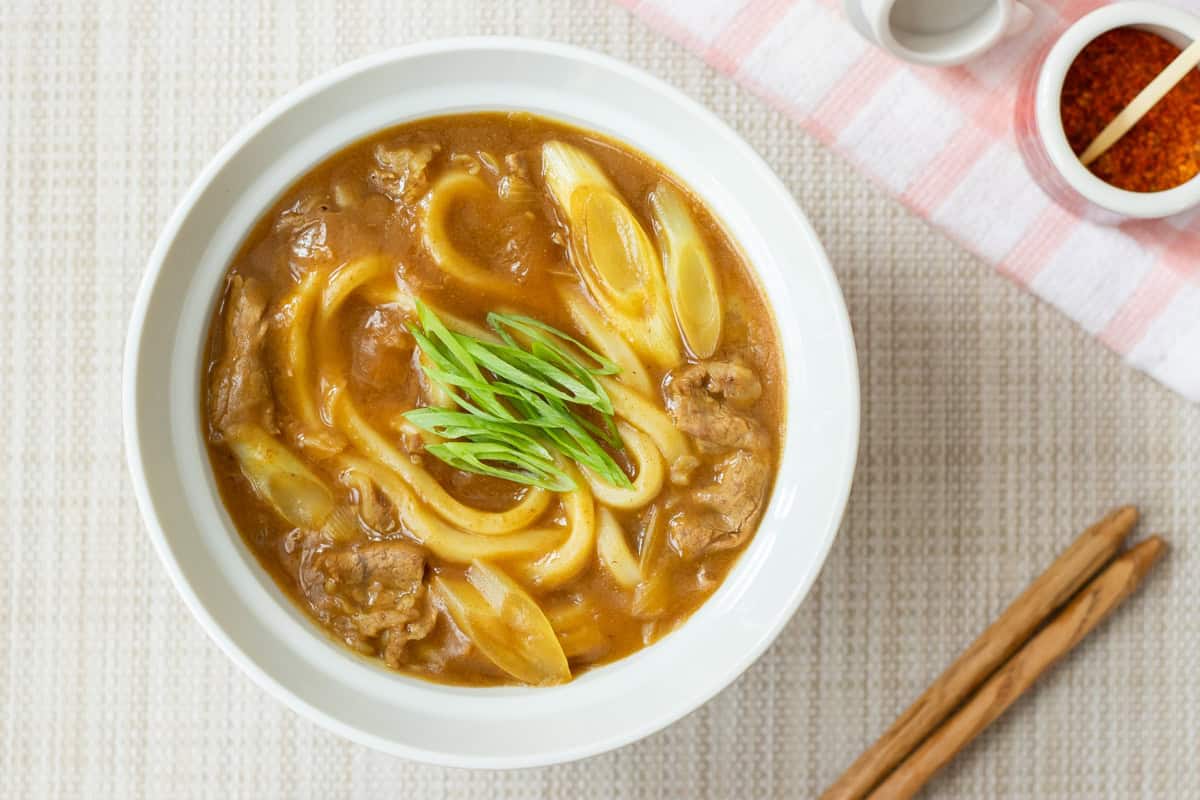
History and Origins
In the mid-to-late 19th century, curry was introduced to Japan and soon became popular in the form of curry rice.
To compete with this growing popularity, the soba noodle restaurant "Sanchō-an" created Curry Soba and Curry Udon to attract customers. These soups were made by dissolving curry roux into bonito dashi, which is typically used for soba and udon noodle soups, and then thickening it with potato starch. This unique combination quickly gained popularity, and it is said that curry udon made in this way had become more common than curry rice by the early 20th century.
As a result, even today, Japanese curry udon retains elements of curry, yet it is still classified as a type of udon noodle soup. This is why you won’t find curry udon at curry restaurants in Japan, but you will find it at udon restaurants.
Making dashi broth
Upon hearing this, some people who have never made dashi broth before might feel intimidated, but rest assured: the recipe includes instructions on how to make dashi, and you can prepare it in under 10 minutes using just bonito flakes (katsuobushi) and two simple steps. You can also use instant dashi granules or dashi packets instead, both of which are convenient options.
The combination of curry and dashi creates a unique flavor experience that you won’t find in many other dishes. Give this dish a try and bring this popular Japanese flavor to your table.
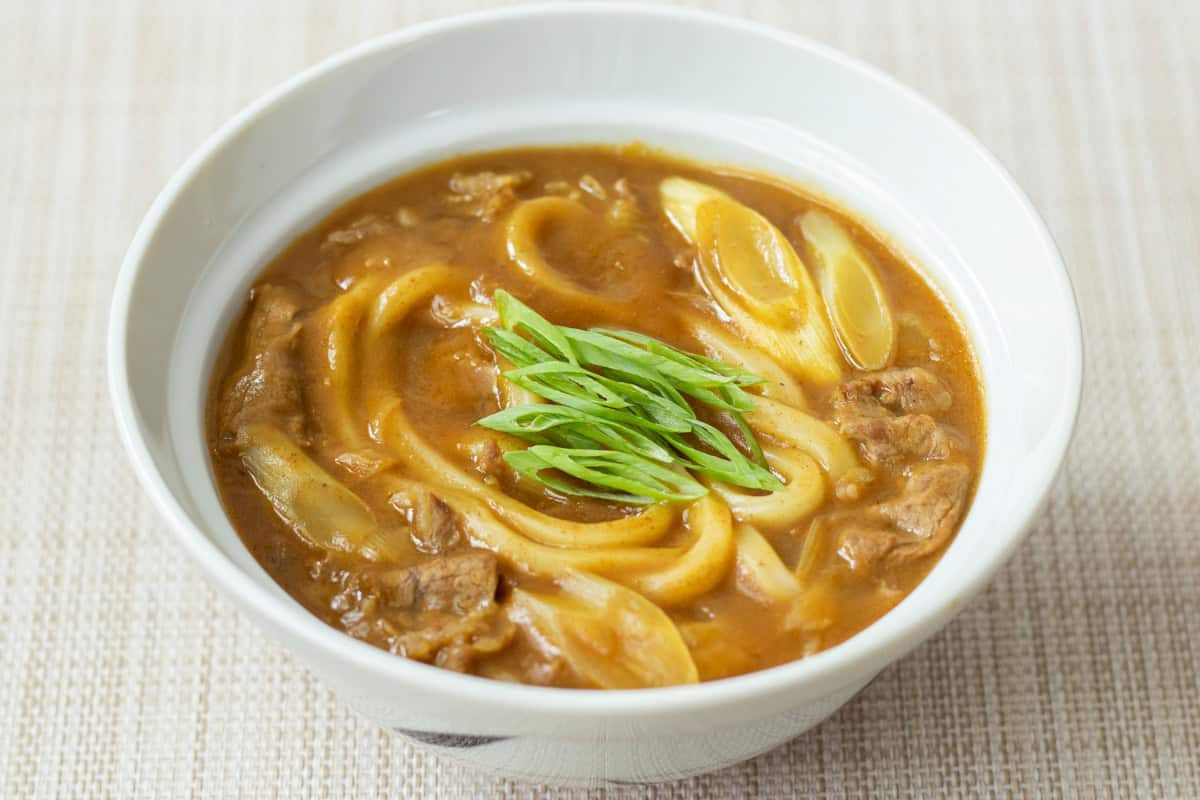
Choosing the right ingredients
Japanese curry udon is considered a type of udon noodle soup, so some of the ingredients differ from those used in Japanese curry rice. The most commonly used ingredients include:
- Naganegi (Japanese leeks)
- Yellow onions
- Green onions / scallions
- Aburaage (fried tofu pouches)
- Pork or beef
In particular, naganegi is recommended because it adds a distinctive flavor to the dish. Regular leeks can also be used as a substitute.
The choice of meat is also important, as it affects the overall taste of the dish. Pork or beef is commonly used, with regional preferences across Japan. Pork is more popular in eastern Japan, while beef is preferred in western Japan.
I find that pork adds richness to the curry without overpowering its flavor, while beef brings a bolder, more distinctive taste to the dish. For this reason, I recommend using beef, as its flavor pairs exceptionally well with curry.
Regardless of your choice of meat, it is best to use fatty cuts. You can also opt for chicken or seafood as alternatives.
Introduction to Japanese curry
Some of you may not be familiar with Japanese curry, so I will give a brief overview.
Japanese curry differs from Indian and Thai curries in that it has a milder spice profile. It has a thick, stew-like texture that is rich yet mild, with a subtle sweetness. This distinctive texture and flavor have gained popularity worldwide, and it has become known as "Japanese curry." Japanese curry can be made at home using curry roux or curry powder produced by Japanese manufacturers.
The curry used in curry udon is also Japanese curry. Its mellow flavor harmonizes perfectly with dashi broth. You can usually find Japanese curry roux at your local grocery store or Asian market, so be sure to look for it.
Using leftover curry?
In Japanese households, it is common to make curry udon using leftover curry from curry rice. Some people even make extra curry when preparing curry rice specifically so they can use it later for curry udon.
Even when using leftover curry, you can follow the same steps in this recipe. In that case, adjust the other ingredients based on how much leftover curry you have.
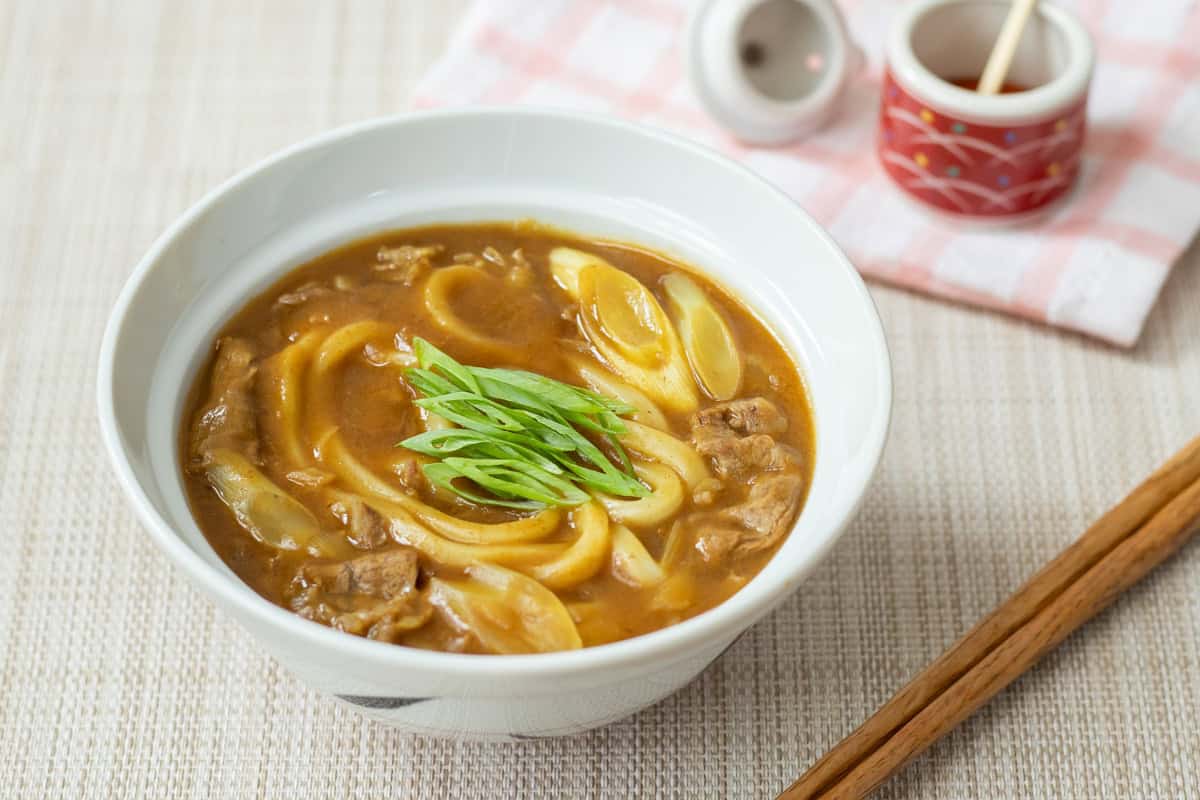
📋Step-by-step recipe
Ingredients
- 2 servings udon noodles (fresh, dried, pre-cooked, or frozen)
- 3.5 oz Japanese leek (naganegi) (can be substituted with regular leek)
- 1 green onion / scallion
- 5.3 oz thinly sliced beef
- 1.8 oz Japanese curry roux
- 1 Tbsp potato starch or cornstarch
- 1 Tbsp water (for the starch)
Bonito dashi (udon broth):
- 3 cups water
- ⅗ cup bonito flakes (katsuobushi)
Seasonings:
- 2 Tbsp mirin
- 1 tsp sugar
- 1 ½ Tbsp soy sauce
Instructions
🕒 Total: 25 minsIf you already have udon broth (bonito dashi or another type of dashi), start from step 3. In that case, use 2 ½ cups (600 ml) for 2 servings.
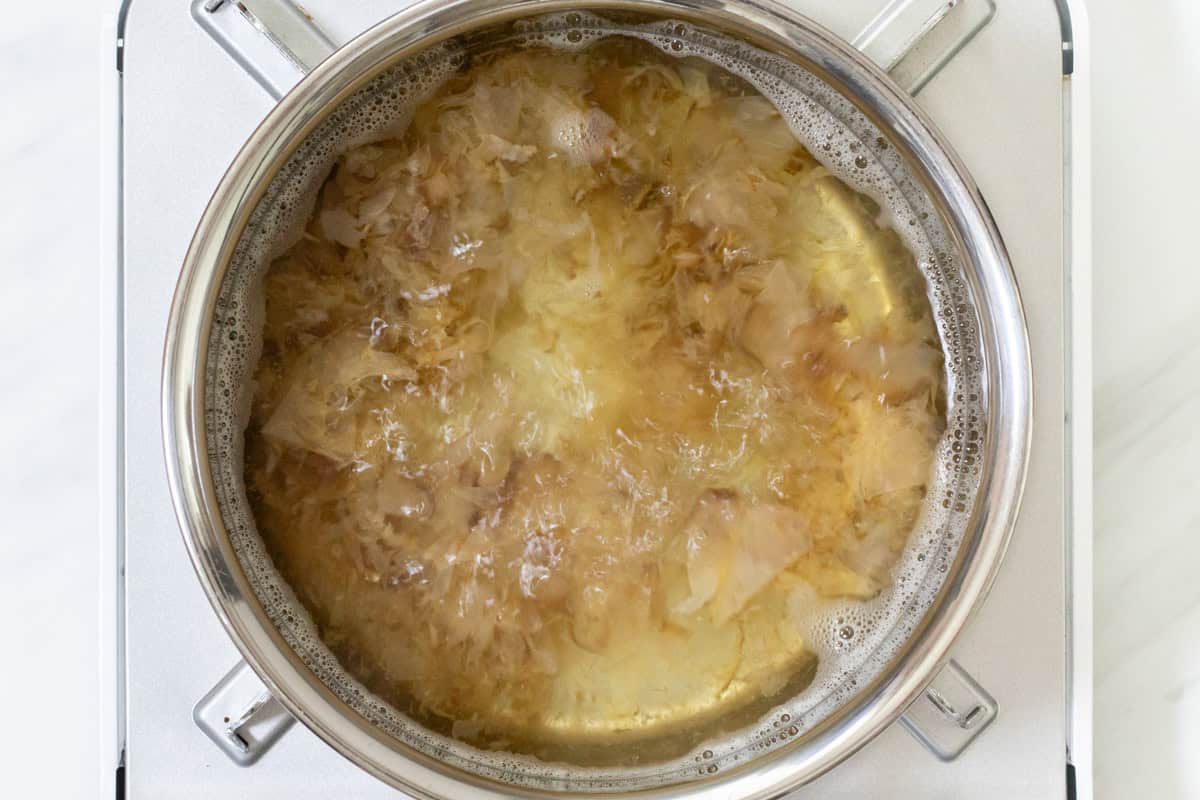
Step 1
Put water in a pot and bring it to a boil. Once boiling, reduce the heat to low, add bonito flakes, and let it simmer for 3 minutes.
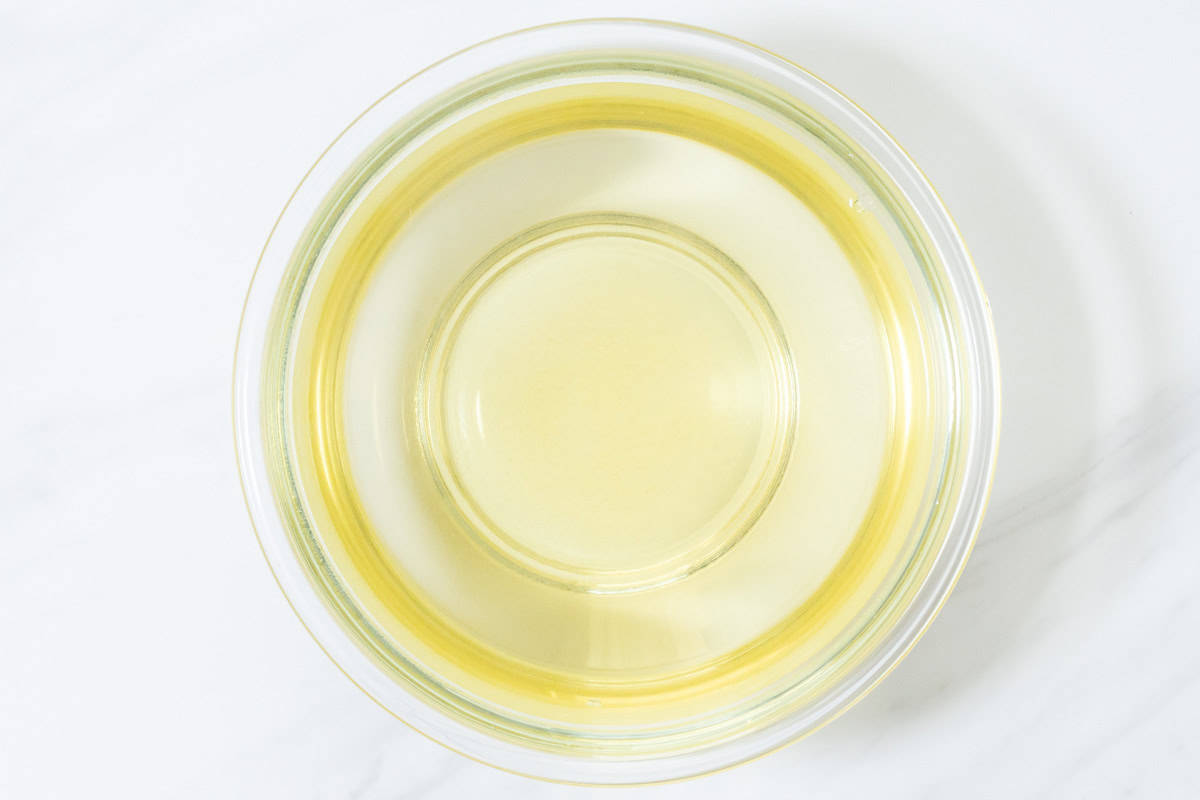
Step 2
Turn off the heat and strain the mixture through a sieve lined with paper towels or a cloth (such as cheesecloth). Alternatively, if you don't mind a few fine bonito flakes remaining, you can simply use a fine-mesh strainer. Bonito dashi (udon broth) is now ready.
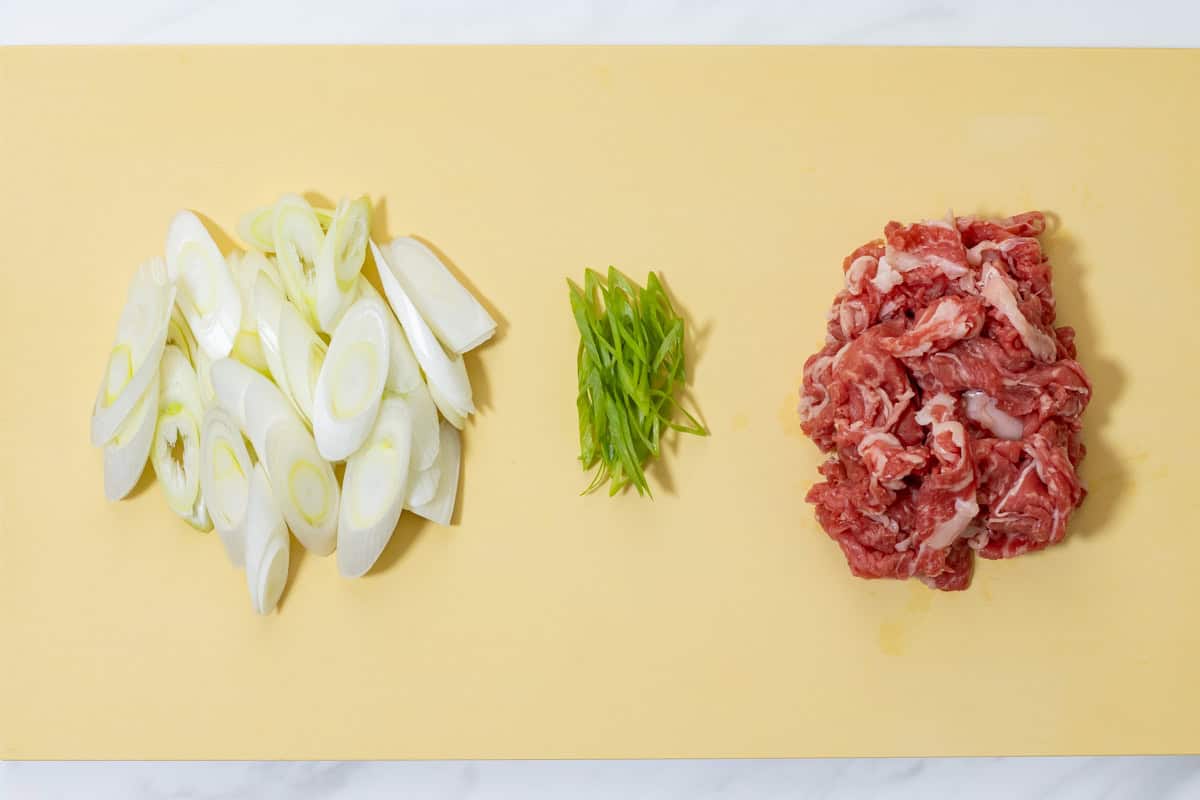
Step 3
Cut the Japanese leek into ⅕-inch (5 mm) thick diagonal slices. Thinly slice the green onion diagonally or into rings. Cut the beef into bite-sized pieces.
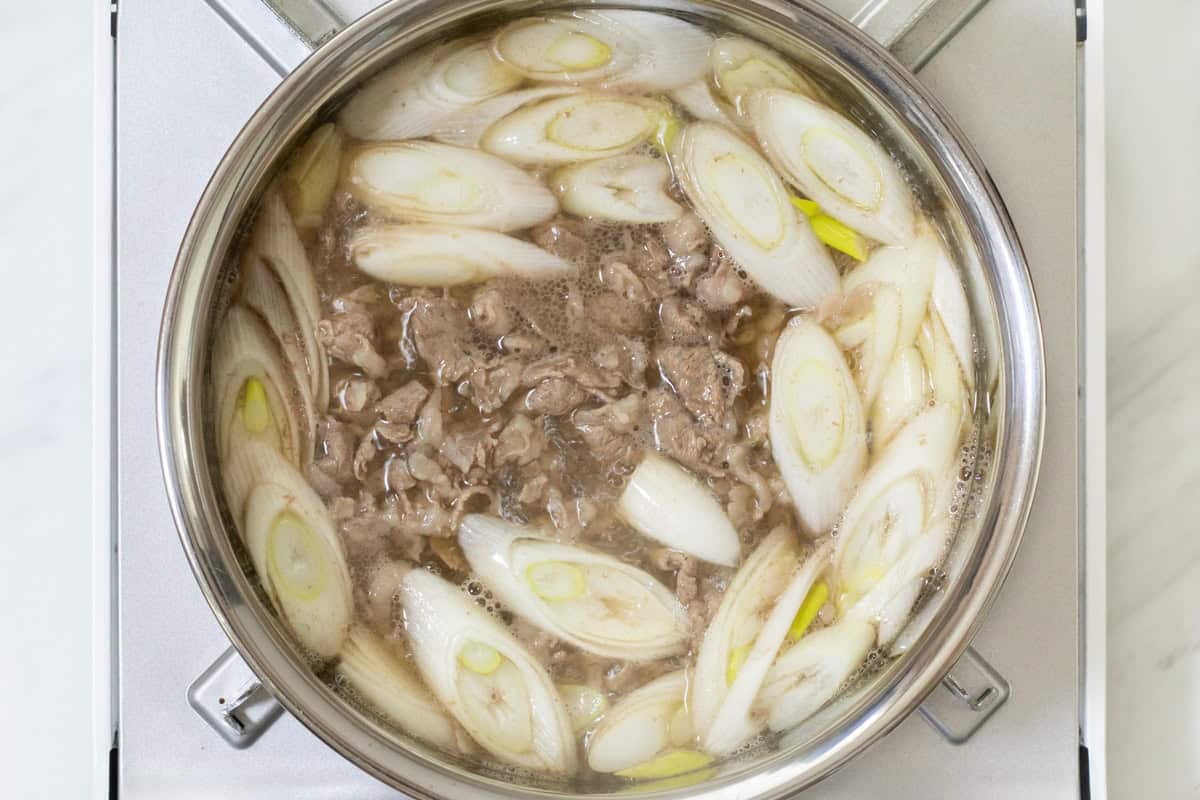
Step 4
Return the bonito dashi to the pot, add the leeks, beef, and the seasonings (mirin, sugar, and soy sauce), and bring it to a boil. Once boiling, reduce the heat to low and simmer for about 3 minutes, skimming off any scum.
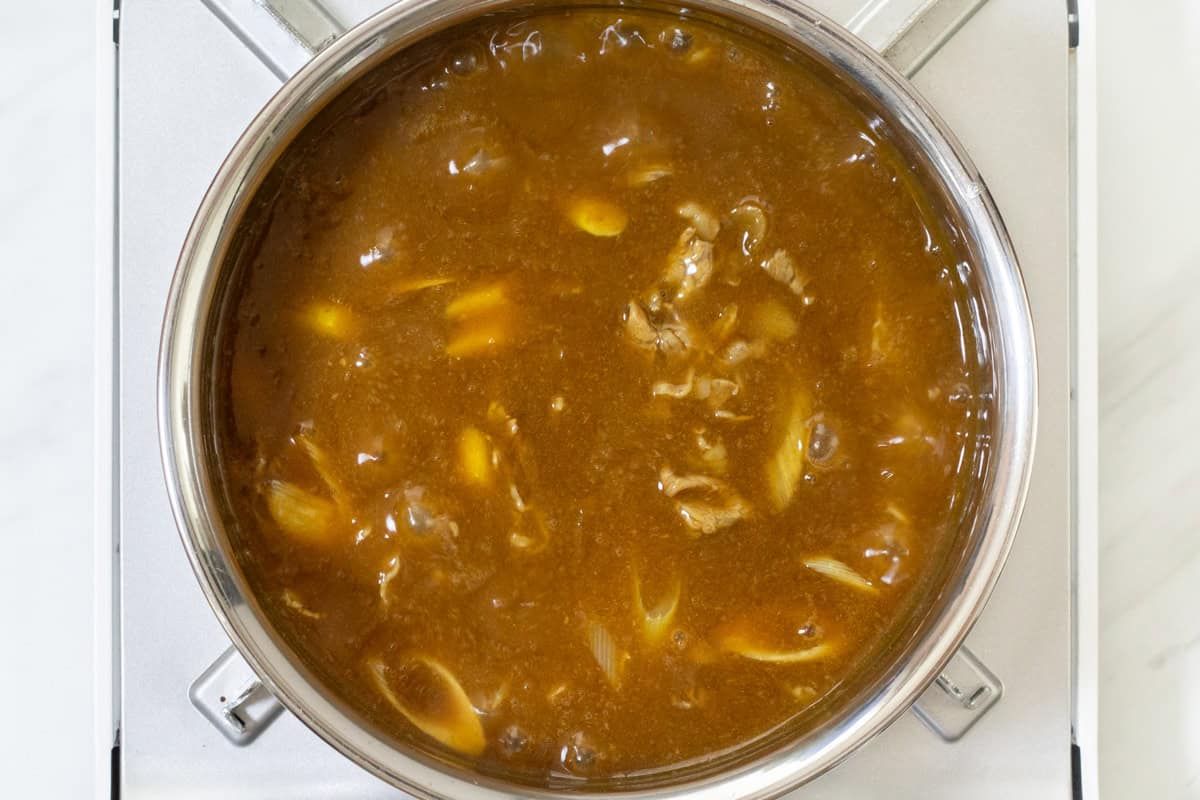
Step 5
Turn off the heat, add curry roux to the pot, and stir until dissolved. In a small bowl, mix the starch with water until smooth, then gradually add it to the pot while stirring constantly to thicken and avoid lumps. Reheat the pot and simmer briefly to blend the flavors and eliminate any powdery taste.
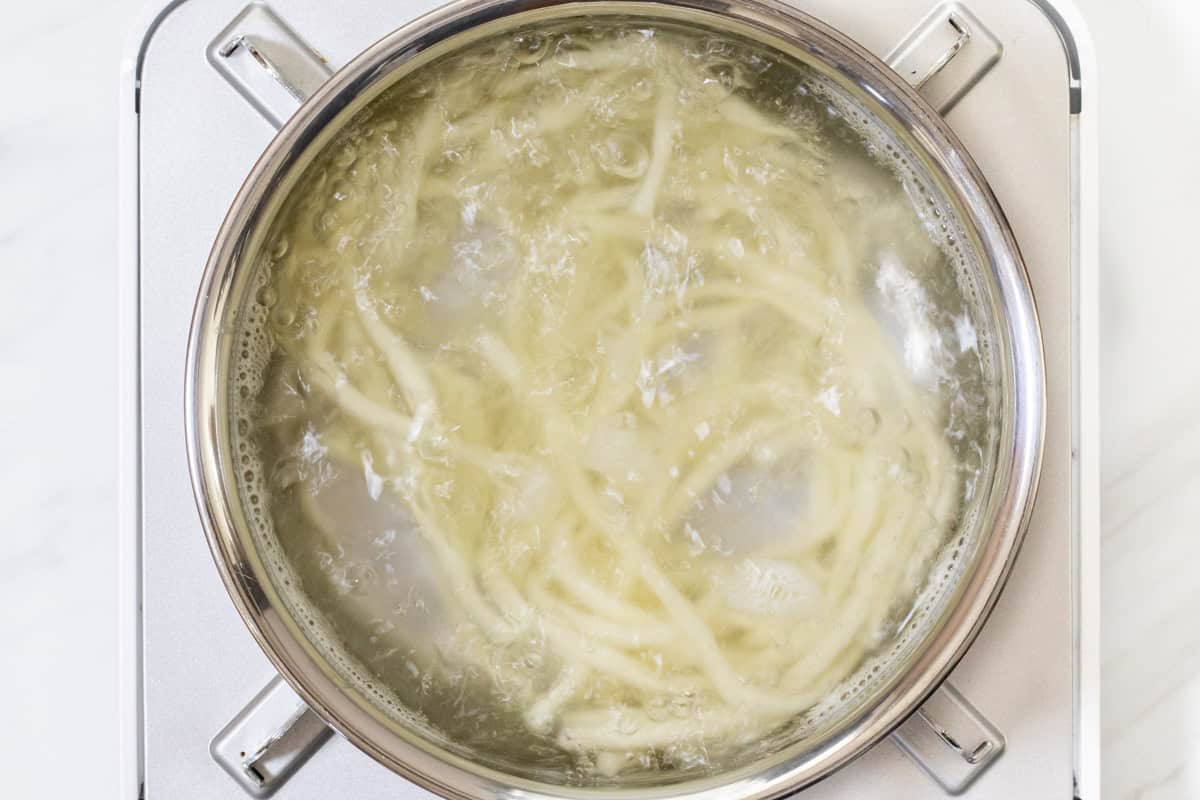
Step 6
If using fresh, dried, or pre-cooked udon noodles: Boil the udon noodles in a separate pot according to the package instructions. Once cooked, drain them in a colander.
If using frozen udon noodles: Lightly sprinkle water over the udon noodles. Then, place them on a microwave-safe plate, cover with plastic wrap or a microwave-safe lid, and microwave on medium power (500-600W) for 3.5 to 4 minutes, or until heated through. (Since this method can cause uneven heating, it is best to microwave one serving at a time. You can also boil them like the other types of udon noodles.)
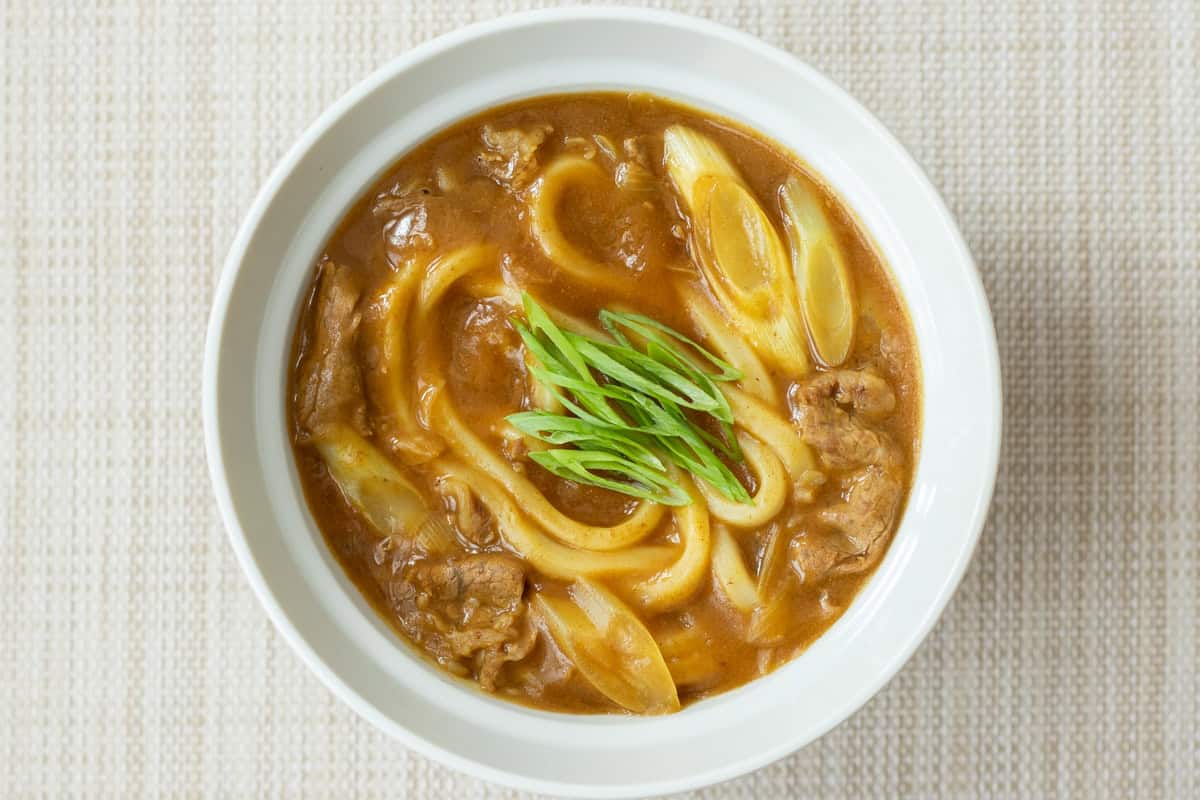
Step 7
Place the noodles in bowls and pour the curry soup over them. Loosen the noodles with chopsticks, then top with the green onions.
To store
This dish is not suitable for storage because cooked udon noodles tend to lose their texture over time, making them less enjoyable. The curry soup itself can be stored for up to 2 days.
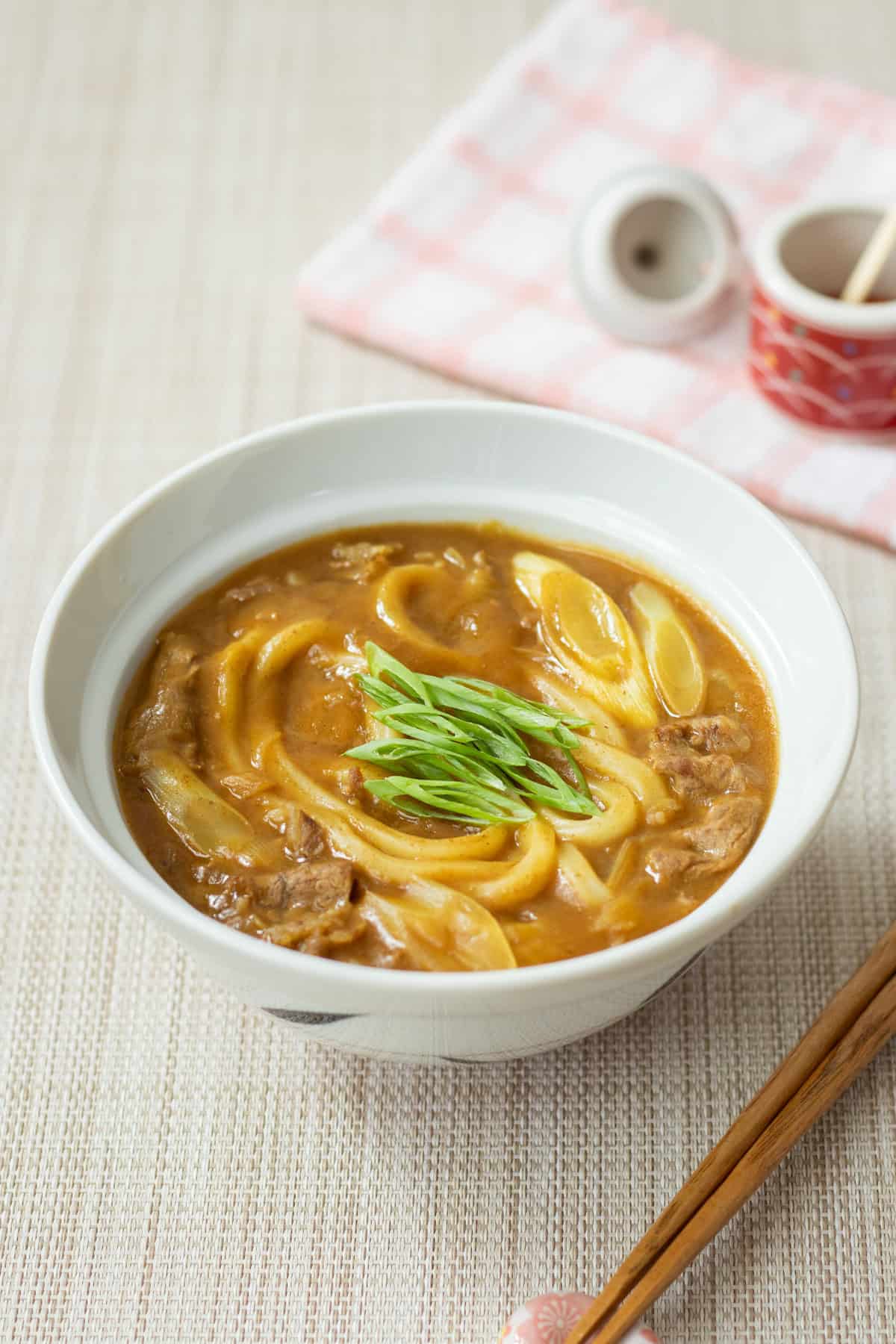
If you try this recipe, I’d love to hear what you think. Please consider leaving a review and star rating in the comments below. If you enjoyed it, I’d really appreciate it if you shared it with your friends.
Recipe card

Japanese Curry Udon
Ingredients
- 2 servings udon noodles (fresh, dried, pre-cooked, or frozen)
- 3.5 oz Japanese leek (naganegi) (can be substituted with regular leek)
- 1 green onion / scallion
- 5.3 oz thinly sliced beef
- 1.8 oz Japanese curry roux
- 1 Tbsp potato starch or cornstarch
- 1 Tbsp water (for the starch)
Bonito dashi (udon broth):
- 3 cups water
- ⅗ cup bonito flakes (katsuobushi)
Seasonings:
- 2 Tbsp mirin
- 1 tsp sugar
- 1 ½ Tbsp soy sauce
Instructions
- Put water in a pot and bring it to a boil. Once boiling, reduce the heat to low, add bonito flakes, and let it simmer for 3 minutes.
- Turn off the heat and strain the mixture through a sieve lined with paper towels or a cloth (such as cheesecloth). Alternatively, if you don't mind a few fine bonito flakes remaining, you can simply use a fine-mesh strainer. Bonito dashi (udon broth) is now ready.
- Cut the Japanese leek into ⅕-inch (5 mm) thick diagonal slices. Thinly slice the green onion diagonally or into rings. Cut the beef into bite-sized pieces.
- Return the bonito dashi to the pot, add the leeks, beef, and the seasonings (mirin, sugar, and soy sauce), and bring it to a boil. Once boiling, reduce the heat to low and simmer for about 3 minutes, skimming off any scum.
- Turn off the heat, add curry roux to the pot, and stir until dissolved. In a small bowl, mix the starch with water until smooth, then gradually add it to the pot while stirring constantly to thicken and avoid lumps. Reheat the pot and simmer briefly to blend the flavors and eliminate any powdery taste.
- If using fresh, dried, or pre-cooked udon noodles: Boil the udon noodles in a separate pot according to the package instructions. Once cooked, drain them in a colander.If using frozen udon noodles: Lightly sprinkle water over the udon noodles. Then, place them on a microwave-safe plate, cover with plastic wrap or a microwave-safe lid, and microwave on medium power (500-600W) for 3.5 to 4 minutes, or until heated through. (Since this method can cause uneven heating, it is best to microwave one serving at a time. You can also boil them like the other types of udon noodles.)
- Place the noodles in bowls and pour the curry soup over them. Loosen the noodles with chopsticks, then top with the green onions.
Notes
- If you already have udon broth (bonito dashi or another type of dashi), start from step 3. In that case, use 2 ½ cups (600 ml) for 2 servings.
- This dish is not suitable for storage because cooked udon noodles tend to lose their texture over time, making them less enjoyable. The curry soup itself can be stored for up to 2 days.

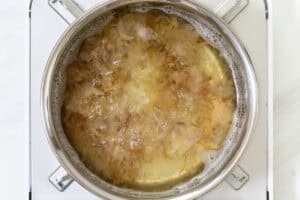
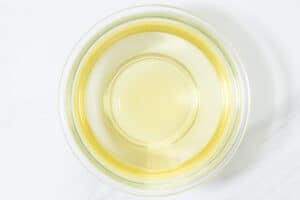
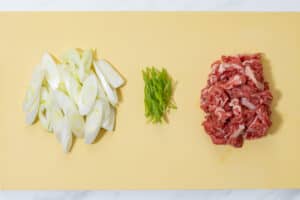
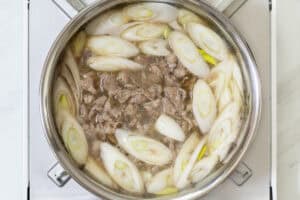
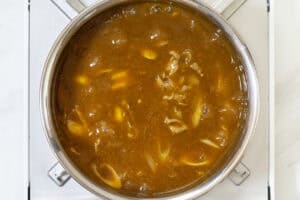
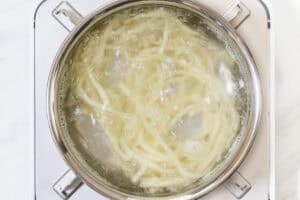
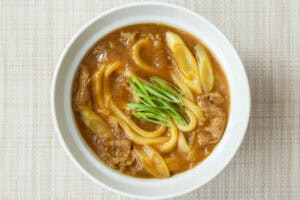
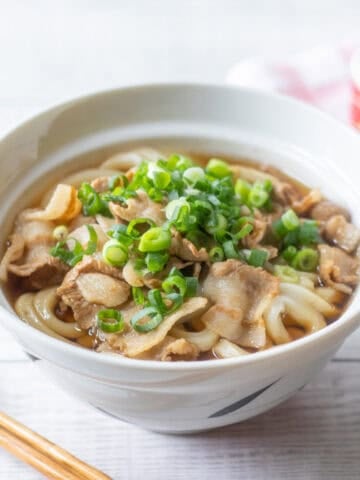
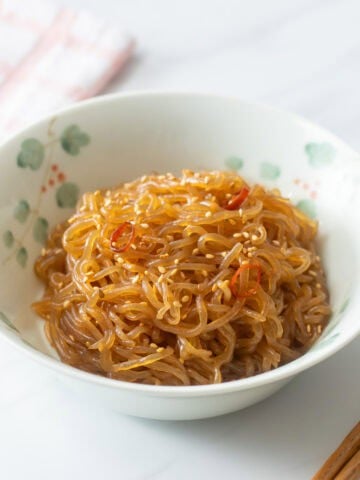
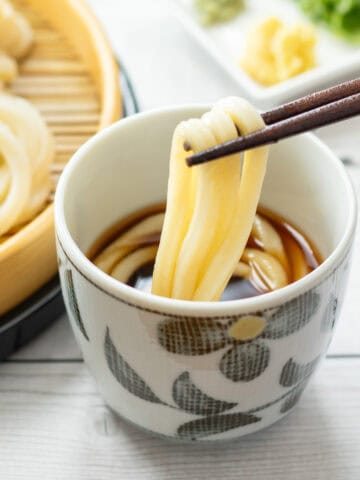
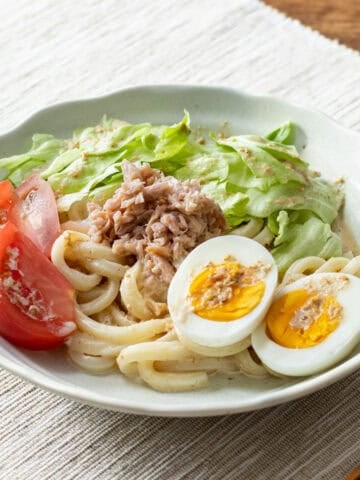
Leave a Rating and a Comment